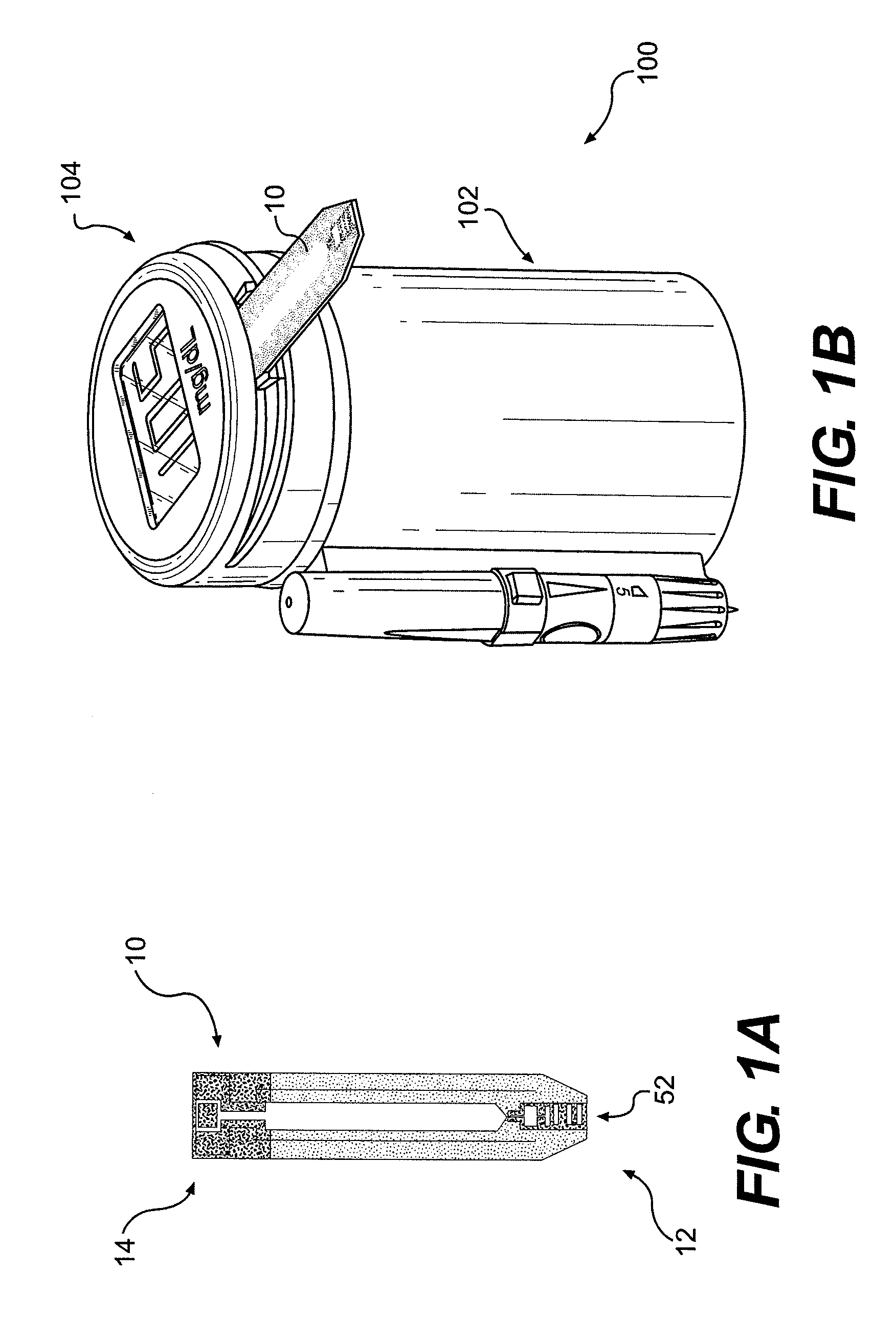System and Methods for Determination of Analyte Concentration Using Time Resolved Amperometry
- Summary
- Abstract
- Description
- Claims
- Application Information
AI Technical Summary
Benefits of technology
Problems solved by technology
Method used
Image
Examples
Embodiment Construction
[0001]This application claims priority to U.S. Provisional Patent Application No. 60 / 952,076, filed Jul. 26, 2007, and U.S. Non-Provisional patent application Ser. No. 12 / 179,853, filed Jul. 25, 2008, which are both incorporated herein by reference in their entirety
FIELD OF THE INVENTION
[0002]The present invention relates to the field of diagnostic testing systems for determining the concentration of an analyte in a solution and, more particularly, to systems and methods for measuring an analyte concentration using time resolved amperometry.
BACKGROUND OF THE INVENTION
[0003]The present disclosure relates to a biosensor system for measuring an analyte in a bodily fluid, such as blood. The system includes a process and system for improved determination of analyte concentration over a wide range of analyte concentrations.
[0004]Electrochemical sensors have long been used to detect or measure the presence of substances in fluid samples. Electrochemical sensors include a reagent mixture co...
PUM
| Property | Measurement | Unit |
|---|---|---|
| Length | aaaaa | aaaaa |
| Fraction | aaaaa | aaaaa |
| Time | aaaaa | aaaaa |
Abstract
Description
Claims
Application Information
 Login to View More
Login to View More - R&D
- Intellectual Property
- Life Sciences
- Materials
- Tech Scout
- Unparalleled Data Quality
- Higher Quality Content
- 60% Fewer Hallucinations
Browse by: Latest US Patents, China's latest patents, Technical Efficacy Thesaurus, Application Domain, Technology Topic, Popular Technical Reports.
© 2025 PatSnap. All rights reserved.Legal|Privacy policy|Modern Slavery Act Transparency Statement|Sitemap|About US| Contact US: help@patsnap.com



